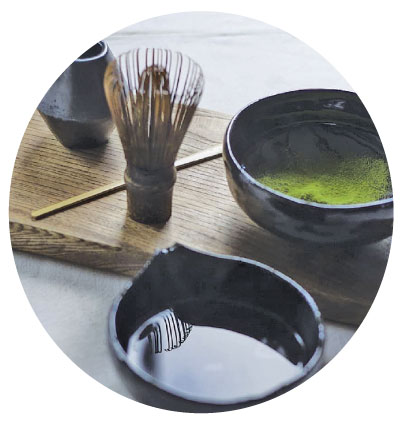
Due to the simplicity in preparation and the sheer variety available, tea is a beverage found to be a staple of culture in every corner of the globe. Lauded for its health, relaxation and spiritual benefits for most of the world, tea is not just a beverage. Commonly used in social situations in the present, tea culture has a layered history in the East where it originated. China, credited as the nation to introduce tea to the world, has a deep reverence for the very act of drinking tea and has in turn created a long-standing tradition out of it, making tea a vital part of Chinese culture. Japan, which had an extensive history of their culture being influenced by China, also adopted tea drinking as a tradition.
Though directly inspired by Chinese tea drinking practices, the Japanese tea traditions are quite different from them. For an initial point, though they use the same tea leaves, the way they prepare tea is radically different from each other. Once dried, Chinese tea leaves are used as is, often twisted, balled up or laid flat. This is in contrast to Japanese green tea, called Matcha, which grinds up the dried tea leaves instead.
While the difference might seem inconsequential, the results speak for themselves. Matcha is significantly sweeter than its Chinese equivalent and is also thought have 60 percent antioxidants, a great health benefit, as opposed to the Chinese tea’s measly 12-16 percent.
In Japan, the art of making tea, known as chadō, is treated with reverence and in certain cases is more like a ceremony than a simple brewing. This is because its history is linked to Buddhism. Tea was first brought to Japan by a monk named Eichu on his return from China. He served a form of green tea similar to Matcha to the then Emperor, who, by Imperial order, cultivated tea plantations, though it wasn’t all that popular and was only available to nobles.
Though powdered green tea was initially used for Buddhist rituals, it soon became a luxury item for Samurai and other people of import, which largely helped propagate its popularity within the country, but the inherent minimalism of tea preparation clashed with their decadent opulence.
Soon,under the guidance of Senno Rikyu, the tea master of Toyotomi Hideyoshi, tea making developed much of the aesthetic features that defines what it is today, becoming more of a spiritual practice than an enjoyable drink. For a short period, Sen no Rikyu used tea as a political tool which was quickly quashed but still led to the further propagation of tea.
While tea is commonly served as a simple gesture of hospitality, a Tea Ceremony is conducted to establish relaxed communication between a host and his guests.
Though more seriously, it can be to attain spiritual satisfaction through drinking tea and silent contemplation, Tea Ceremonies can also serve as simple entertainment to bond a host and their guests.
Ideally, Tea Ceremonies take place in a special tatami room built for that explicit purpose, with an entrance made low enough so guests would need to bow to enter. A hearth built into the floor, a low ceiling as well as hanging scroll decorations indicating the type of ceremony and purpose of visit are also common features of these Tea Ceremony rooms called Chashitsu. However, any area with the room to set out the items and serve a guest tea can also be used a venue.
The details of the procedure itself changes according to the venue, season and school of Tea Ceremony but usually the host prepares the tea while facing the guest.
A Japanese sweet that is served before the tea is eaten first. The cup of tea is then given to the guest, facing a particular way which the guest will take with the face away from themselves before drinking, compliment the host, face the cup towards the host and return it.
In China, tea is treated as something of great importance, considered part of the seven necessities of life to start a day. As such, Japan, a nation that l got much its values from China, also adopted tea as a huge part of their life and culture and has remained so to this day. This ritual, this ‘Way of Tea’ or chadō, is now considered to be one of three classical Japanese arts of refinement, along with kōdō, incense appreciation and kadō, flower appreciation. What used to be an exclusive luxury to the elite of Japan can now be enjoyed and experienced by not just the common people but by visitors who wish to taste their great culture.
